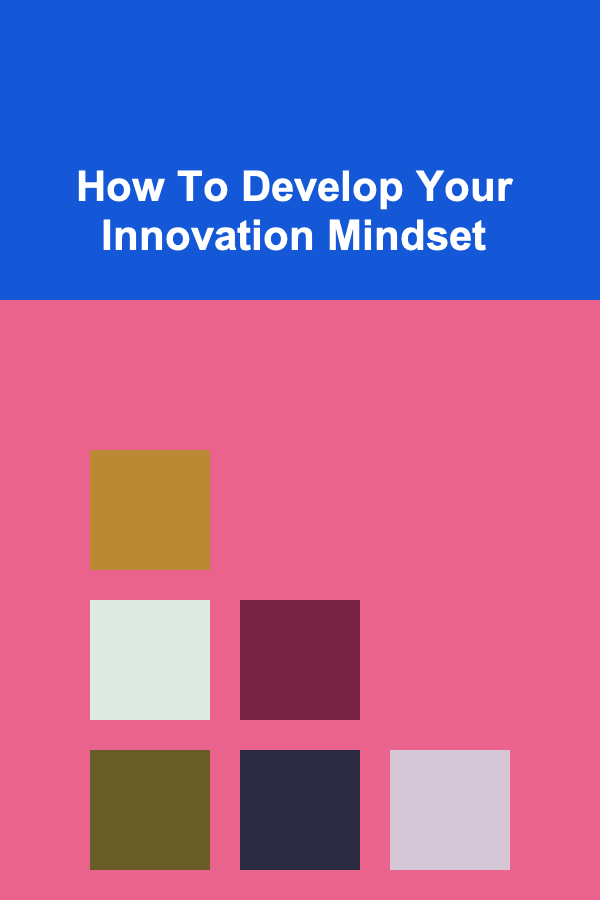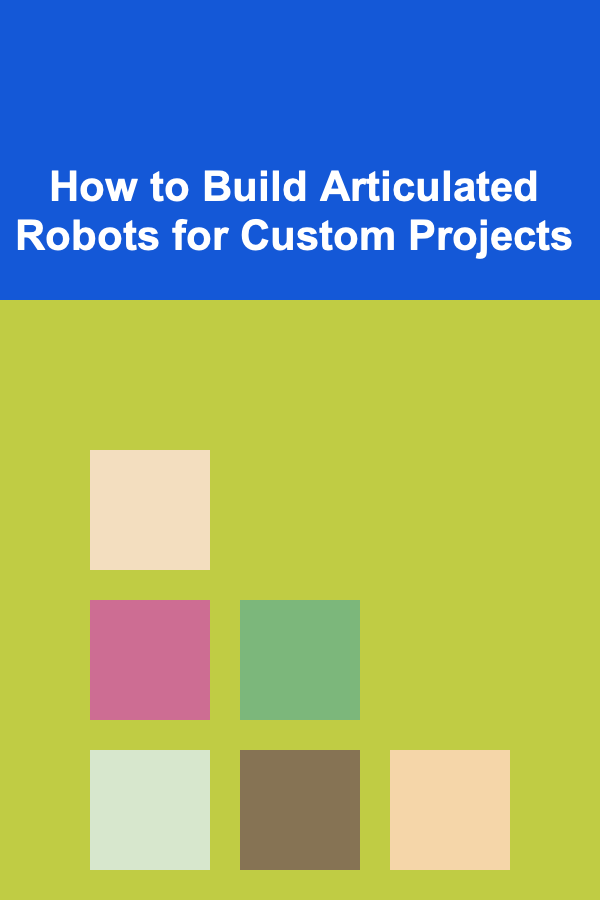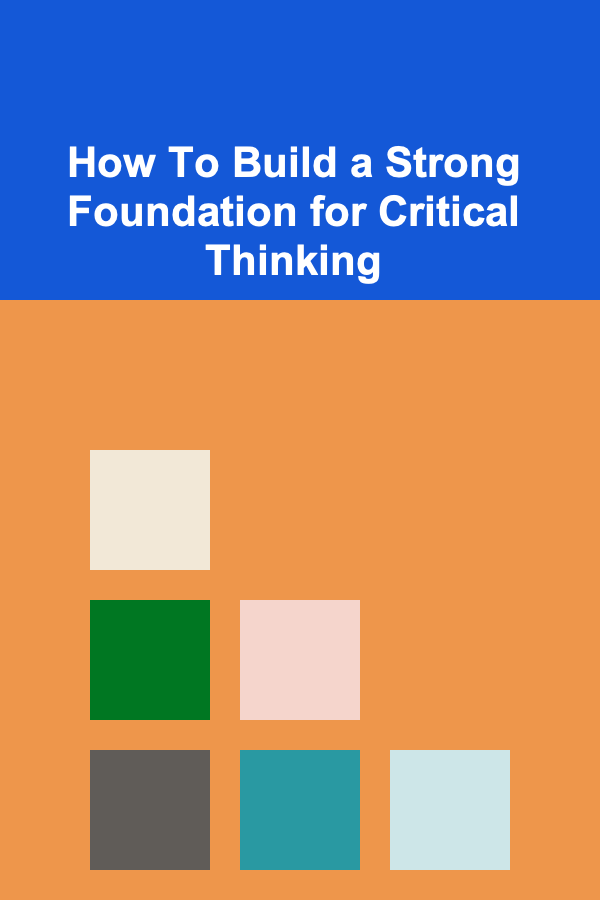
How To Develop Your Innovation Mindset
ebook include PDF & Audio bundle (Micro Guide)
$12.99$11.99
Limited Time Offer! Order within the next:

In today's rapidly evolving world, innovation is no longer a luxury; it's a necessity. From startups disrupting established industries to large corporations striving to stay ahead of the curve, the ability to innovate is a critical determinant of success. However, innovation isn't just about groundbreaking inventions or revolutionary technologies. It's fundamentally about a mindset -- a way of thinking and approaching challenges that fosters creativity, experimentation, and continuous improvement. Cultivating an innovation mindset is within everyone's reach, requiring a conscious effort to challenge assumptions, embrace curiosity, and develop a resilience in the face of setbacks. This article delves into the key principles and practical strategies for developing your own innovation mindset, empowering you to unlock your creative potential and contribute to a more innovative future.
Understanding the Innovation Mindset
Before embarking on the journey of developing an innovation mindset, it's crucial to understand what it truly entails. It's more than just brainstorming sessions or flashy gadgets; it's a deeply ingrained approach to problem-solving and opportunity identification. Here are some key characteristics of an innovation mindset:
- Curiosity and a Desire to Learn: Innovative individuals are inherently curious. They constantly ask "why" and "what if," seeking to understand the world around them and explore new possibilities. They possess an insatiable desire to learn and are open to acquiring knowledge from diverse sources.
- Embracing Failure as a Learning Opportunity: Failure is an inevitable part of the innovation process. An innovation mindset reframes failure as a valuable opportunity to learn and improve. Instead of being discouraged by setbacks, innovators analyze what went wrong, extract lessons, and use that knowledge to refine their approach.
- Challenging Assumptions and Thinking Outside the Box: Innovation often requires questioning established norms and challenging deeply held assumptions. Individuals with an innovation mindset are willing to break free from conventional thinking and explore unconventional ideas.
- Collaboration and Openness to Different Perspectives: Innovation rarely happens in isolation. An innovation mindset embraces collaboration and values diverse perspectives. By working with others who have different skills, experiences, and backgrounds, individuals can generate more creative and effective solutions.
- A Focus on Customer Needs and Value Creation: Ultimately, innovation should be driven by a desire to solve problems and create value for customers. Individuals with an innovation mindset are deeply empathetic to the needs of others and constantly seek ways to improve their lives through innovative solutions.
- Adaptability and Resilience: The world is constantly changing, and innovative individuals must be able to adapt to new circumstances and overcome challenges. Resilience -- the ability to bounce back from setbacks -- is a crucial characteristic of an innovation mindset.
Breaking Down the Barriers to Innovation
Developing an innovation mindset isn't always easy. Many internal and external barriers can hinder creativity and stifle innovation. Recognizing and addressing these barriers is essential for fostering a more innovative environment.
Internal Barriers
- Fear of Failure: Perhaps the most significant barrier to innovation is the fear of failure. Individuals may be hesitant to try new things or propose unconventional ideas if they are afraid of being judged or penalized for failing.
- Fixed Mindset: A fixed mindset is the belief that one's abilities and intelligence are fixed traits. This mindset can limit creativity and prevent individuals from taking risks or embracing new challenges.
- Lack of Confidence: A lack of confidence in one's own abilities can also hinder innovation. Individuals may underestimate their creative potential and be afraid to share their ideas.
- Comfort Zone: Stepping outside of one's comfort zone can be uncomfortable and challenging. However, innovation often requires venturing into uncharted territory and embracing new experiences.
- Perfectionism: The pursuit of perfection can be a major obstacle to innovation. Perfectionists may be afraid to release anything that isn't flawless, which can stifle creativity and prevent them from iterating and improving their ideas.
External Barriers
- Bureaucracy and Red Tape: Excessive bureaucracy and red tape can stifle innovation by creating unnecessary hurdles and slowing down the decision-making process.
- Lack of Resources: Insufficient resources, such as funding, time, and personnel, can limit the ability to experiment and develop new ideas.
- Risk-Averse Culture: In organizations with a risk-averse culture, individuals may be discouraged from taking risks or proposing unconventional ideas.
- Lack of Communication and Collaboration: Poor communication and collaboration can prevent ideas from being shared and developed effectively.
- Resistance to Change: Some individuals and organizations may resist change, even if it has the potential to improve performance or create new opportunities.
Strategies for Cultivating an Innovation Mindset
Overcoming these barriers and cultivating an innovation mindset requires a conscious and deliberate effort. Here are some practical strategies you can implement:
1. Cultivate Curiosity and Embrace Lifelong Learning
The foundation of an innovation mindset is a deep-seated curiosity and a commitment to lifelong learning. Make a conscious effort to explore new topics, ask questions, and seek out diverse perspectives.
- Read Widely: Read books, articles, and blog posts on a variety of subjects, even those outside of your area of expertise.
- Attend Conferences and Workshops: Attend industry conferences, workshops, and webinars to learn about new trends and technologies.
- Engage in Conversations with People from Different Backgrounds: Seek out opportunities to interact with people who have different skills, experiences, and perspectives.
- Travel and Explore New Cultures: Traveling can broaden your horizons and expose you to new ideas and ways of thinking.
- Ask "Why" and "What If": Constantly question assumptions and explore alternative possibilities.
- Document Your Learnings: Keep a journal or notebook to record your thoughts, ideas, and learnings. This allows you to reflect on what you've learned and identify patterns and connections.
2. Reframe Failure as a Learning Opportunity
Shift your perspective on failure and view it as a valuable learning opportunity. Instead of being discouraged by setbacks, analyze what went wrong and extract lessons that can be applied to future projects.
- Embrace the "Fail Fast, Fail Often" Philosophy: Experiment with new ideas and be willing to accept that some of them will fail. The faster you fail, the faster you can learn and iterate.
- Conduct Post-Mortem Analyses: After a project fails, conduct a thorough analysis to identify the root causes of the failure. What went wrong? What could have been done differently?
- Share Your Failures with Others: Don't be afraid to share your failures with others. By sharing your experiences, you can help others learn from your mistakes and avoid making the same errors.
- Focus on the Process, Not Just the Outcome: Even if a project fails, you may have learned valuable lessons along the way. Focus on the process of innovation and the knowledge you gained, rather than just the end result.
- Develop Resilience: Resilience is the ability to bounce back from setbacks. Develop strategies for coping with stress and maintaining a positive attitude in the face of adversity.
3. Challenge Assumptions and Think Outside the Box
Break free from conventional thinking and challenge deeply held assumptions. Look for alternative perspectives and explore unconventional ideas.
- Use Brainstorming Techniques: Engage in brainstorming sessions with colleagues or friends to generate a wide range of ideas.
- Apply Design Thinking Principles: Design thinking is a human-centered approach to problem-solving that emphasizes empathy, experimentation, and iteration.
- Use Mind Mapping: Mind mapping is a visual tool that can help you explore ideas and make connections between different concepts.
- Challenge the Status Quo: Question established norms and processes. Are there better ways of doing things?
- Look for Analogies: Draw inspiration from other industries and disciplines. How can you apply ideas from one context to another?
- Engage in "What If" Scenarios: Explore different possibilities and scenarios. What if we could do this? What if we couldn't do that?
- Reverse Thinking: Try solving the problem by approaching it from the opposite direction.
4. Foster Collaboration and Seek Diverse Perspectives
Innovation thrives on collaboration and diverse perspectives. Work with others who have different skills, experiences, and backgrounds to generate more creative and effective solutions.
- Build a Diverse Network: Connect with people from different industries, cultures, and backgrounds.
- Actively Listen to Others: Pay attention to what others have to say and try to understand their perspectives.
- Be Open to Feedback: Solicit feedback from others on your ideas and be willing to incorporate their suggestions.
- Create a Safe Space for Sharing Ideas: Foster an environment where people feel comfortable sharing their ideas, even if they are unconventional or risky.
- Embrace Conflict and Debate: Healthy debate can lead to better ideas. Encourage constructive criticism and be willing to challenge each other's assumptions.
- Practice Active Listening: Pay attention to both the verbal and nonverbal cues of the speaker. Show genuine interest and try to understand their perspective without interrupting.
- Seek Mentorship: Find a mentor who can guide you and provide valuable insights into the innovation process.
5. Focus on Customer Needs and Value Creation
Ultimately, innovation should be driven by a desire to solve problems and create value for customers. Develop a deep understanding of customer needs and constantly seek ways to improve their lives through innovative solutions.
- Conduct Customer Research: Talk to your customers to understand their needs, pain points, and desires.
- Use Empathy Mapping: Empathy mapping is a tool that can help you understand your customers' thoughts, feelings, and behaviors.
- Create Customer Personas: Develop detailed profiles of your ideal customers to help you better understand their needs and motivations.
- Focus on Solving Real Problems: Identify problems that your customers are facing and develop innovative solutions to address those problems.
- Test Your Ideas with Customers: Get feedback from customers on your ideas before you invest too much time and resources into developing them.
- Iterate Based on Customer Feedback: Continuously improve your products and services based on customer feedback.
- Understand the Customer Journey: Map out the entire customer journey to identify opportunities for improvement and innovation.
6. Practice Mindfulness and Cultivate a Growth Mindset
Mindfulness and a growth mindset are essential for developing an innovation mindset. Mindfulness helps you to be present in the moment and to focus your attention on the task at hand. A growth mindset is the belief that your abilities and intelligence can be developed through hard work and dedication.
- Practice Meditation: Meditation can help you to calm your mind and focus your attention.
- Engage in Activities That You Enjoy: Spending time doing things that you enjoy can help you to relax and recharge.
- Set Realistic Goals: Setting realistic goals can help you to stay motivated and avoid feeling overwhelmed.
- Celebrate Small Wins: Celebrating small wins can help you to build momentum and stay positive.
- Embrace Challenges: View challenges as opportunities for growth and learning.
- Learn from Others' Successes: Study the strategies and tactics used by successful innovators.
- Believe in Your Potential: Believe that you have the ability to develop your skills and intelligence.
7. Create a Dedicated Innovation Space and Time
Having a dedicated space and time for innovation can significantly boost your creativity and productivity. This could be a physical space like a quiet corner in your home or office, or it could be a specific time slot in your schedule.
- Designate a Physical Space: Create a space that is free from distractions and that inspires you to be creative.
- Schedule Dedicated Time for Innovation: Block out specific times in your calendar for brainstorming, experimentation, and research.
- Use the Time Wisely: During your dedicated innovation time, focus on activities that will help you to generate new ideas and solve problems.
- Minimize Distractions: Turn off your phone, close your email, and let others know that you need to focus.
- Experiment with Different Environments: Try working in different locations to see what inspires you most.
- Use Tools and Resources: Gather the tools and resources you need for innovation, such as notebooks, pens, whiteboards, and online research tools.
Conclusion
Developing an innovation mindset is a journey, not a destination. It requires a continuous commitment to learning, experimentation, and collaboration. By embracing curiosity, reframing failure, challenging assumptions, and focusing on customer needs, you can unlock your creative potential and contribute to a more innovative future. Remember that innovation is not just about inventing new things; it's about finding better ways to solve problems and create value for others. Start small, be persistent, and embrace the process. The world needs your innovative ideas!

Creating a One-Page Website for Personal Branding
Read More
How to Organize Your Garage for Maximum Usability
Read More
Profiling the Top Remote Work Companies You Should Know
Read More
How To Explore the Truth Behind 9/11 Conspiracy Theories
Read More
How to Build Articulated Robots for Custom Projects
Read More
How To Build a Strong Foundation for Critical Thinking
Read MoreOther Products

Creating a One-Page Website for Personal Branding
Read More
How to Organize Your Garage for Maximum Usability
Read More
Profiling the Top Remote Work Companies You Should Know
Read More
How To Explore the Truth Behind 9/11 Conspiracy Theories
Read More
How to Build Articulated Robots for Custom Projects
Read More